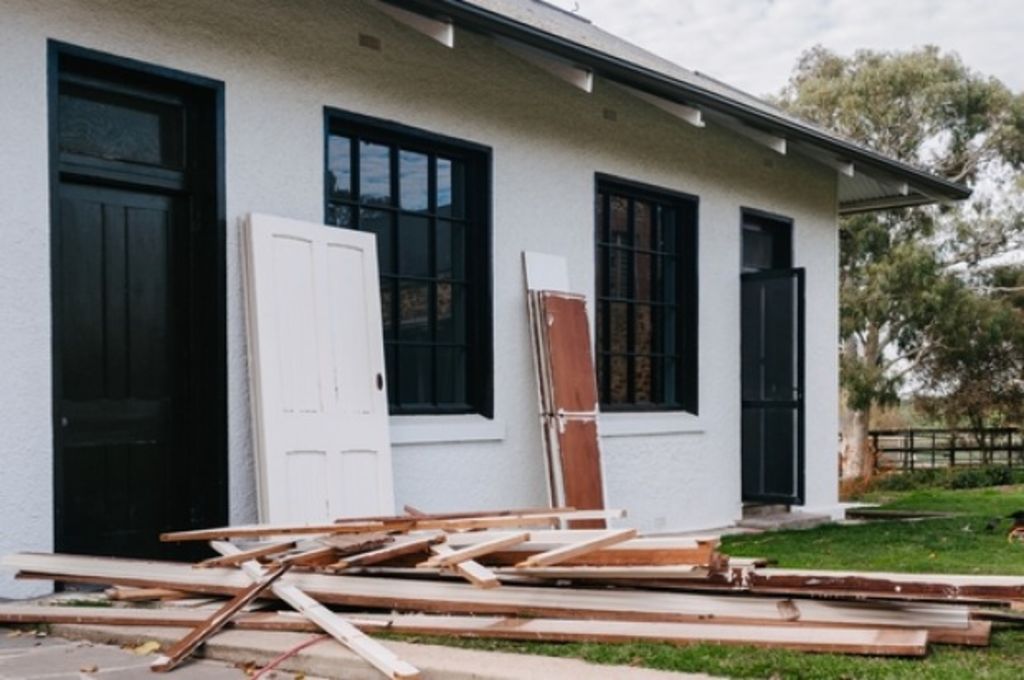Fixer-upper or reno nightmare? Eight warning signs to look out for

The term “renovator’s delight” is bandied about a lot in real estate ads but it pays to know whether a home is a genuine fixer-upper – or a sure-fire flop.
Even rookie renovators will know a lick of paint, a few rolls of new carpet and some fancy appliances can lift a home with minor cosmetic flaws from drab to fab.
Beyond the surface uglies, there is a host of property turn-offs that could stand in the way of a dream renovation. How do you know whether they’re curable ailments or signs a home’s condition is terminal?
Read on …
1. Cracks
A few fine cracks here and there aren’t a huge concern but when they are more than 5 millimetres wide, you might have cause to be afraid. Very afraid.
Jim Elliott, principal of Sydney construction company Elliott Projects, says large cracks could be a sign a house has underpinning problems that can’t be fixed.
“Big cracks could mean major structural issues,” Elliott says.
2. Damp
Likewise, mildew can be tricky – if not impossible – to eradicate. Be wary of homes with damp walls and musty smells. Evidence of crystallising salts in the walls is a warning sign that moisture could be penetrating the building, Elliott says.
“If it’s a small, localised section of damp and the building has been there for some time, it’s probably not as much of an issue, but if it’s extensive, you’ve got a problem.”
Outdated kitchen. Photo: Very Very Vicky
3. Ugly kitchen and bathroom
Owners of pink bathtubs and floor-to-ceiling timber laminate kitchens, rejoice! Even the ugliest kitchens and bathrooms can be prettied up or ripped out and replaced relatively easily.
“Old-fashioned, worn-out looking bathrooms and kitchens you can always fix,” Elliott says.
4. Dark rooms
Open-plan living is all the rage these days, so much so that bathrooms are occasionally incorporated into master bedrooms with nary a low shelf for privacy. (Seriously, architects, can we stop this trend?)
Happily, traditional floorplans with separate kitchens, living rooms and dining rooms can usually be opened up by knocking down a wall or two, creating a modern, open-plan living space.
“Skylights and windows can be used to bring light into dark rooms too,” Elliott says.
5. Bad location
The gold standard in real estate is usually the house on the high side of the street with a north-facing backyard.
Of course, the asking price will probably reflect a less-than-ideal location, but remember that location is one flaw that can’t be remedied.
Sarah Wood, director and project manager at The Middlewoman in Sydney, says it’s best not to buy a house built in a hollow.
“If it’s a hot environment, it’s better to buy something on a hill,” Wood says. “Think of the landscape without the houses and whether it gets a lot of shading naturally. It doesn’t matter how many skylights you put in, you can’t change the location.”

Mismatched floor boards. Photo: Rachael’s Reno
6. Mismatched additions
Some homes have had more nips and tucks than all the Real Housewives combined. Wood says a house in original condition – even if that condition isn’t too flash – is easier to renovate than one that has been extended ad infinitum.
“The reasoning is that when it’s had several additions, they’ve usually been done by people who aren’t builders who have been fixing it up without a coherent plan. Most builders will say it’s best to knock it down and start again,” Wood says.
7. Wacky style
From charming terraces to sturdy bungalows, different home types and styles are popular in different areas.
When fixing up with a view to selling for a hefty profit, Sydney buyer’s agent Patrick Bright, EPS Property Search founder, advises researching the neighbourhood thoroughly and making sure you pick a home that is likely to sell quickly post-renovation.
“You’ve got to look at what the area offers, what the demand is now and what the demand is likely to be in the future,” Bright says.
8. Traffic noise
Even the most delightfully decorated al fresco entertaining area isn’t going to be a hit with would-be buyers if it’s covered with smog from the B-doubles charging down the road over the fence.
For Bright, no matter how appealing a fixer-upper is in other respects, he would shy away from buying a home on a noisy road.
“It’s going to affect the resale,” he says. “Every property has negatives but you can’t fix the position. My personal preference is to avoid properties that are going to take a bit of time to sell but there’s a price point for everyone.”
We recommend
States
Capital Cities
Capital Cities - Rentals
Popular Areas
Allhomes
More







